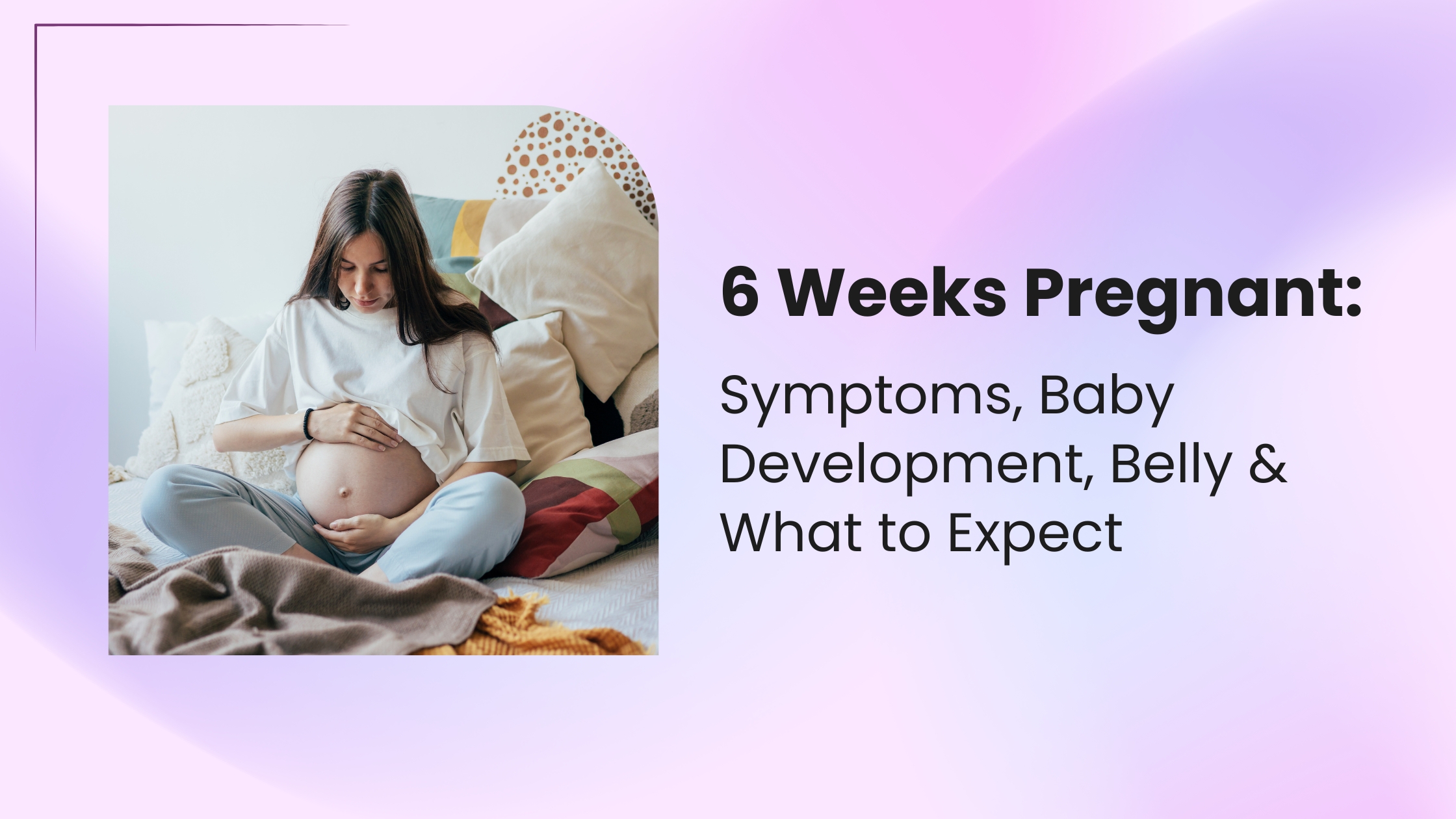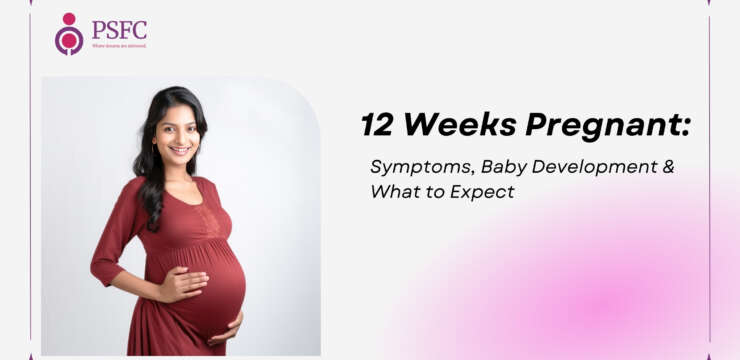At 6 weeks pregnant, reaching this exciting milestone can be both difficult and vital. While many are already experiencing early pregnancy signs week 6, others may still be in shock that they are pregnant. Your child is developing rapidly, while the hormone is shifting to support the new life within you – all the hard work behind the curtain is being done by your body to support life!
If you are at 6 weeks pregnant and curious to know what happens during this stage, what your belly should look like, whether you can hear the heartbeat, and which foods to eat, this comprehensive guide provides all of the answers!
What Happens at 6 Weeks Pregnant?
By week 6, an embryo is developing rapidly:
Baby is approximately 1/4-1/8 inch long – roughly equivalent to the length of a lentil. The neural tube (which will form into the brain and spinal cord) is currently closing. As soon as the heart starts beating, though its vibrations may still be too faint for physicians to hear without using ultrasound technology, activity ensues in its chambers. Small buds are beginning to form that will eventually develop into arms and legs. Facial features such as eyes, ears, and nose are starting to take form. The placenta and umbilical cord are developing to nourish your baby. Even as your baby still develops slowly, the foundation for all their major organs and systems is being laid now.
6 Weeks Pregnant Symptoms
Early pregnancy signs week 6 vary for every woman. These could include:
Morning disease (nausea and vomiting) often begins around this time. Breast tenderness and inflammatory hormones are caused by ups and downs. Regular urination and HCG levels increase as your uterine expansion occurs, which can occur as part of its general course. Fatigue and low energy, because your body works hard to support pregnancy, are common side effects. Food cravings or aversions due to hormonal shift. Emotions that are different or growing are no secret to anyone, yet many people experience mood shifts or, at times, an increase in emotions. Mild cramping or spotting (can be normal if not severe or heavy). Not all women experience these symptoms at this stage in life. Some women can feel quite well at this point in time – which is perfectly fine!
How Many Months is 6 Weeks Pregnant?
Parents typically measure pregnancy in weeks however, many prefer thinking in months. At 6 weeks pregnant, you are:
1.5 months pregnant?
Still in my first trimester (which lasts up until week 12). Remember, pregnancy is considered confirmed on the first day of your last period–not on the actual date of conception.
Where is the Baby Located at 6 Weeks?
In 6 weeks of pregnancy, your unborn baby should settle in your uterus, safely preserved by its gestational sac. The placenta connects the fetus to the uterine wall. The amniotic bag provides cushion protection and assistance to unborn infants, which provides protection and cushioning during pregnancy. An embryo may still be too small to feel physically in your belly.
Is There a Heartbeat at 6 Weeks?
Yes, in most cases, a heartbeat can be detected in a 6 -week womb using transvaginal ultrasound imaging. Heart beats after 5-6 weeks. At this stage, the fetal heart rate is between 90–110 beats per minute and increases in the coming weeks. Do not panic if you have not yet heard or seen the heartbeat – sometimes it may take time before the surface of pregnancy symptoms, especially if your dates were slightly off.
Healthy Diet and Lifestyle at 6 Weeks Pregnant
Start Planning Now for a Healthy Diet and Lifestyle during Pregnancy
Diet and lifestyle decisions now play an integral part in supporting your baby’s development. At 6 weeks pregnant:
Foods to Eat
Aiming for folate-rich foods such as leafy greens, beans, and fortified cereals as sources of folate to prevent neural tube defects is key in protecting babies against neural tube defects.
Protein sources like chicken, fish, eggs, and legumes provide lean proteins needed for tissue growth.
Whole grains provide steady energy.
Fruits and vegetables contain essential vitamins, minerals, and fiber.
Calcium-rich dairy and food items may help enhance bone development.
Avoid Unsafe Foods.
Stooling out any uncooked seafood and meats is generally best advised against.
Unpasteurized dairy and excess caffeine (less than 200 mg daily).
Alcohol and smoking should both be strictly avoided.
Lifestyle Tips
Stay hydrated by drinking lots of water throughout the day. Light exercise, such as walking or prenatal yoga, is a great way to stay in shape during pregnancy. Prioritize rest and sleep to help fight fatigue. Be sure to take your prenatal vitamins on a daily basis.
When to See Your Doctor at 6 Weeks Pregnant
At 6 Weeks Pregnant, it is time to see your healthcare provider for an examination. Women generally schedule their initial prenatal appointment between 6-8 weeks of gestation. At this visit, your physician may:
Verify pregnancy through blood tests or ultrasound imaging. Check your hCG levels. Speak to your healthcare providers about your medical history. Provide advice regarding nutrition and lifestyle. An early ultrasound can show you the heartbeat of your unborn child.
If you experience symptoms like:
Heavy bleeding, severe abdominal pain, and dizziness or fainting are telltale signs of an ectopic pregnancy (sharp pain in the shoulders or sharp pain accompanied by heavy spotting).
6 Weeks Pregnant Signs of a Boy
Signs of Pregnancy at 6 Weeks Are Indisputable, However. Myths suggest that early symptoms can provide clues as to a baby’s gender, even though it’s too soon. Some old wives’ tales claim such indicators exist.
Carrying Low Belly-boy. Almost No Morning Sickness-boy
Craving salty foods? Boy. Are we in for trouble!
Fun yet non-scientific methods exist for guessing the gender of unborn babies. An anatomy scan typically occurs between 18-20 weeks to confirm it.
6 Weeks Pregnant Symptoms of a Girl
Some experts speculate that certain symptoms indicate you could be expecting a girl:
More intense morning sickness – female.
Girl. Trying to reduce cravings for sweet foods.
Higher HCG Levels Are Indisputably Female
Unfortunately, this is all just myth–your symptoms at 6 weeks pregnant are caused by hormones rather than your baby’s gender.
How Much Cramping is Normal at 6 Weeks Pregnant?
Mild cramping at six weeks is generally normal and could be due to:
Stretching of the Uterus. Veränderung of Hormones. Increase in Blood Flow.
When to be concerned:
Cramping with heavy bleeding. Pain that is sudden, sharp, or one-sided can be alarmingly distressful. Experience persistent or worsening discomfort. These symptoms could indicate miscarriage or an ectopic pregnancy and should be seen by a medical provider immediately.
6 Weeks Pregnant Belly – What to Expect
At 6 weeks pregnant, your abdomen usually hasn’t changed much yet. Many pregnant women do not show a visible bump at this stage. Bloating and water retention can make you feel full more quickly. If this is your second or subsequent pregnancy, you may notice changes much earlier.
Remember: Every pregnant belly differs at 6 weeks of gestation; don’t compare yourself too closely with others’ experiences.
hCG Levels at 6 Weeks Pregnant
At this point, human chorionic gonadotropin (hCG) levels have reached high levels and will continue to rise.
Normal 6 weeks pregnant hCG levels typically range from 1,080-56,500 mIU/mL. hCG helps the pregnancy progress and is responsible for many of your symptoms. Levels may fluctuate widely. what’s most important is that they rise steadily. Your physician should check that hCG levels are increasing every 48-72 hours during early gestation.
As you wrap up week 6, your body is just finishing its preparation for the main event: ovulation. The journey is just beginning, and what happens next is crucial.
Ready to find out about ovulation, fertilization, and the very first signs of development?
Continue to Week 7 Pregnant: Your Next Steps and What to Expect
FAQs About 6 Weeks Pregnant
1. Is It Safe To See My Baby At 6 Weeks Pregnant? (Can I)
Yes, on a transvaginal ultrasound, you may detect a small embryo, yolk sac and sometimes heartbeat.
2. How Does A 6 Week Pregnant Belly Appear?
Most women do not experience visible bumps yet, yet bloating is common.
3. Can I start experiencing movement at 6 weeks?
No, it is far too soon; typically baby movements become noticeable between 16-20 weeks gestation.
4. Should I be concerned if I detect signs of gestation at 6 weeks?
Light spotting may be considered normal, while heavy bleeding should be evaluated by a healthcare provider.
5. What will my baby look like at 6 weeks?
Your baby resembles an aquatic creature with small fins.





1 Comment
Comments are closed.